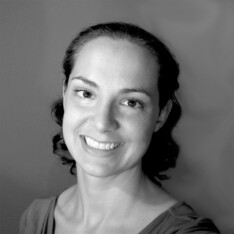Parents as Domestic Terrorists: Why No One Should Be Surprised

This week, the Pennsylvania School Boards Association voted unanimously to withdraw from the National School Board Association (NBSA) after the latter sent a letter to President Biden comparing angry parents’ speeches at school board meetings to “domestic terrorism and hate crimes.” The request for federal law enforcement to step in and silence parents and other critics may be remarkable in its brazenness (even if threats of violence were made, that is a matter for local police, not the feds), but it is the natural extension of other federal interventions in local schools. The Pennsylvania School Boards Association, like many other organizations and millions of parents, is finally pushing back against top-down control of education.
We might quibble about what constituted the proverbial last straw for these disaffiliations, but Covid-related reactions do seem to have galvanized a movement to decentralize control of education. Perhaps more parents saw the absurdities of schooling when it took place in their own living rooms, instead of behind closed doors. Others saw teachers’ unions politicizing reopenings with little consideration of what was best for learners.
Extended closures, masking mandates, and virtual learning, as well as conflicts over curricula, have crystallized a new willingness to resist the elites who claim total authority over what and how children are taught.
The very existence of a national education standard suggests that “What should kids learn?” is a question with a single answer, which can then be replicated to a scale of 50 million students. Centralizing that question in Washington, DC has empowered an enormous network of special interests and an educational power structure (4,400 federal Department of Education employees, 3 million teachers, half a million administrators, support staff, unions, textbook publishers, testing companies) who’ve committed to one answer and want to perpetuate the status quo – even when it isn’t working for a majority of students.
Educating America? Or Perpetuating Power?
To understand the goals of the educational power structure, we should recall what Vaclav Havel said about ideology. The ideology an institution teaches is nothing more nor less than “the interpretation of reality by the power structure.”
Havel knew a thing or two about asserting power over a population. The playwright-dissident-turned-president wrote his way out of communist hell, and was instrumental in avoiding a bloody civil war by first allowing the Czech people to topple communist rule and second by establishing Slovak independence.
He continues…
…Power legitimates itself ideologically….Under totalitarianism, there is nothing to prevent ideology from becoming more and more removed from reality, gradually turning into what it has already become in the post-totalitarian system: a world of appearances, a mere ritual, a formalized language deprived of semantic contact with reality and transformed into a system of ritual signs that replace reality with pseudo-reality.
The educational power structure, insulated from feedback from parents or employers, “deprived of contact with reality,” has a core goal: to justify its own existence. Teachers’ unions, administrators, local school boards, and state boards of education all exist to serve themselves and other adults, not children or parents. Their job is to manage budgets and pensions and professional development, not to educate kids.
Where systemic failures are acknowledged, they are used as evidence that the failing system needs more money, more power, more authority. The power legitimizes itself.
And that is what compulsory institutional school has become, and what many are beginning to rebel against: a totalitarian system of ritual signs that replace reality with pseudo-reality.
A majority of high school seniors are not proficient in reading by the state’s own standards (which is a questionable standard anyway). Most graduate with little education or preparation for life. Still, they march to Pomp and Circumstance, bearing cap, gown, and diploma: the ritual signs of pseudo-reality.
Our National Curriculum
The very idea of a national, standard curriculum should trouble us – even without national law enforcement crushing dissenters. Who will decide the one universal way to regard ourselves? Schools may pay lip service to diversity, but their whole structure proclaims there is one correct representation of reality, and millions of people must submit their children to that ideology.
Schools try to teach far too much, all disjointed and devoid of context, and teach that content in ways we know don’t work for most brains. Instead of giving children access to the libraries and gymnasiums and supportive staff, we give them inflexible expectations and a strict pace: sight words in kindergarten, multiplication tables in third grade, long division in fifth. Children who don’t fit that script, or who react to institutional school settings rebelliously (as most adults would, if forced to endure them) are pathologized and medicated or branded as failures.
Of course school board meetings have become flashpoints, with threats and curses hurled at administrators. School boards have chosen for themselves the role of deciding what representation of reality will be taught to other people’s children. And parents, often for lack of alternatives, send kids off on a bus or into a school door, and turn over responsibility for their education to government programming, which they want some say in shaping. Students spend 20,000 hours absorbing and being measured against a construction of reality that was chosen for them, according to someone else’s values.
This is the compulsory curriculum: show up, sit still, wait to be told what to do, and then do what we tell you. Gold stars and punishments will be administered accordingly.
That is what compulsory, institutional, government-run schools teach. They exist not to teach students, but to teach an ideology: the single interpretation of reality (and humanity, and success) promoted by the powerful.
John Taylor Gatto taught public school for 30 years, winning both New York City and State Teacher of the Year, then quit because he “no longer wish[ed] to make a living harming children.” In his acceptance speech for his final teaching award, Gatto resigned from teaching, listing the seven lessons he said schools actually want him to teach: confusion, class position, indifference, emotional dependency, intellectual dependency, provisional self-esteem, and surveillance.
We retain very little of what we supposedly learn in school. We forget chemical nomenclature unless we use it often (and if we do, we certainly would have learned it without being forced in school). We forget the dates of wars, and the quadratic equation, and state capitals.
What we don’t forget is the true national curriculum. How to walk into a room and look around for who is in charge, and wait to be told what to do. How to envy and compete with peers, instead of cooperating or helping each other. How to sit quietly, devoted to a single tedious task, until a bell rings and we move to the next forced, tedious task. Compliance. Conformity. Hierarchy. Helplessness. This is what schools were designed to teach: the antithesis of truly empowering education.
Modern compulsory schooling was designed to meet the needs of industrialists. The Ford Foundation, The Rockefeller Foundation, The Carnegie Foundation and others set up trusts, endowed departments, and created teaching grants to shape what would become the compulsory national curriculum. Their intentions may have been benign, even humanitarian, but in appealing to government force, they surrendered any true claim to charity or philanthropy.
The first mission statement of Rockefeller’s General Education Board (1906) is surprisingly frank in its goals:
In our dreams…people yield themselves with perfect docility to our molding hands. The present educational conventions [intellectual development, curiosity] fade from our minds, and unhampered by tradition we work our own good will upon a grateful and responsive folk. We shall not try to make these people or any of their children into philosophers or men of learning or men of science. We have not to raise up from among them authors, educators, poets or men of letters. We shall not search for embryo great artists, painters, musicians, nor lawyers, doctors, preachers, politicians, statesmen, of whom we have ample supply. The task we set before ourselves is very simple…we will organize children… and teach them to do in a perfect way the things [industrial economic tasks] their fathers and mothers are doing in an imperfect way.
The industrial funders and backers of American education designed it to train a workforce that could run the machinery of the industrialist class, reliably read the manuals and write reports and keep the wheels spinning. Schools train people to fill factories, show up on time, and sit working at a task they hate until the bell rings.
Modern “virtual learning,” which requires young people to sit staring at a screen for six or eight hours, is not the best choice for children, but it does certainly serve as updated workforce training.
Sir Ken Robinson says that industrial, institutional schooling is essentially an environmental disaster: we have allowed the very industrialists who strip mined and bulldozed our nation to do the same thing to our minds, extracting the profitable parts and leaving the rest in rubble. The capital provided by coal, Gatto notes, was applied to constrain another, far more volatile natural resource: the intellect of the middle classes.
Breaking the Totalitarian Grip
Amid such fraud and stagnation, Americans have become hungry for education alternatives. This national awakening, which some have called “the pandemic’s silver lining,” questions who should be making choices about what and how our children learn. One in 10 expected kindergartners didn’t show up at government-run schools this fall, while the rate of homeschooling doubled. Pandemic pods, microschools, and other Covid-era adaptations look like they may present a growing list of alternatives to compulsory government schools.
The Vaslav Havel essay, which so accurately articulates the problem of self-perpetuating power above, also writes a prescription for returning that power to the powerless. “Dissidents,” Havel says, “rebel against totalitarian lies simply by refusing to accept them, and instead operating parallel institutions and structures, like black markets of ideological resistance. The goal of these dissidents “is to serve truth, that is, to serve the real aims of life,” which Havel says, “necessarily develops into a defense of individuals and their right to a free and truthful life.”
When something has a totalitarian hold, when most people cannot imagine any other way, anything we do outside the system challenges its purported ubiquity. The power of the powerless is to cooperate and coordinate alternative solutions. Modern microschools and disenrollment are the 2021 equivalent of East German teenagers’ buying Levis on the black market and moonshiners’ supplying bootleggers selling to speakeasies. When the “official” system was paralyzed by pandemic and panic, parents dissented. They did so by creating alternative, sometimes illicit, communities of educational possibilities. A free market in educational alternatives – like a black market in forbidden goods – exists as a direct challenge to totalitarian control.
Havel concludes,
The crust presented by the [totalitarian government’s] life of lies is made of strange stuff. As long as it seals off hermetically the entire society, it appears to be made of stone. But the moment someone breaks through in one place, when one person cries out, ‘The emperor is naked!’—when a single person breaks the rules of the game, thus exposing it as a game—everything suddenly appears in another light and the whole crust seems then to be made of a tissue on the point of tearing and disintegrating uncontrollably.
Dissidents don’t have to distribute pamphlets or carry rifles. Any participation in these dissident solutions, parallel structures of living, learning, working, and caring for one another, is a challenge to the system. All over the country, American parents and students are opting out of government schooling. These are the dissidents who will expose the lies of totalitarian education, simply by continuing to exist.










